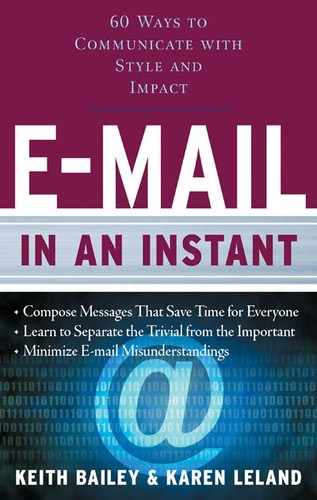29
Use the Trusty Transition
When you want to create a bridge between one idea and the next, two sentences, a few words, or two paragraphs, use the trusty transition. Transitions are a handy helper for e-mail messages, because they keep the reader from getting lost in a plethora of paragraphs and swampland of sentences. Here are a few situations in which the transition can make your message flow more smoothly.
If you want to make a point, try these transitions:
I know how you feel, but the first thing to remember is…
I know how you feel, but on the positive side…
I know how you feel, but I just want to point out…
I know how you feel, and with this in mind…
I know how you feel, and surprisingly enough…
I know how you feel, but to repeat my point…
I know how you feel, but we need to keep in mind…
If you want to conclude or summarize, try these transitions:
We have closed the Jones account, so, as a result…
We have closed the Jones account; therefore…
We have closed the Jones account; consequently…
We have closed the Jones account, so, in summary…
We have closed the Jones account; thus…
We have closed the Jones account, so, in short…
If you want to contrast items, try these transitions:
I think we should go with the Foster Plan as opposed to…
I think we should go with the Foster Plan, but even so…
I think we should go with the Foster Plan, but on the other hand…
I think we should go with the Foster Plan, otherwise…
I think we should go with the Foster Plan, but in the meantime…
I think we should go with the Foster Plan even though…
If you want to add information, try these transitions:
The customer registered a complaint along with…
The customer registered a complaint in addition to…
The customer registered a complaint; moreover…
The customer registered a complaint as well as…
The customer registered a complaint, and equally important…
